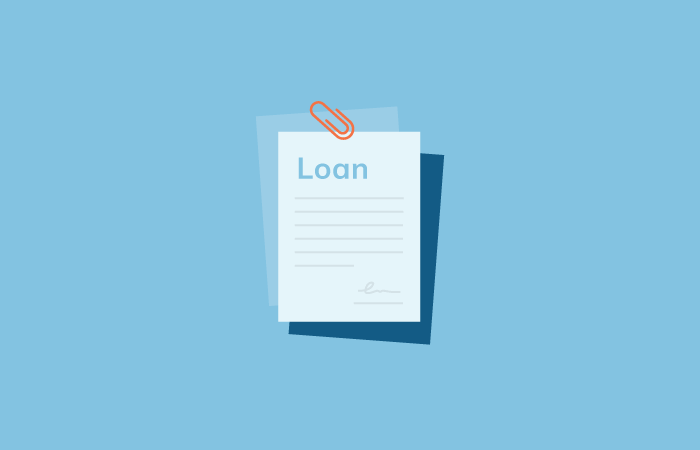PPP rules have changed, so this post may be outdated! Get information on the latest round of PPP from Abrigo's PPP Resources page, or let us know below if you'd like articles like this in your inbox.
Your Financial Institution Issued a PPP Loan – Now What?
April 15, 2020
Read Time: 0 min

Key Takeaways
- Lenders participating in the Paycheck Protection Program (PPP) have obligations after issuing the loan to a small business. Banks and credit unions are seeking guidance on these critical next stages of the PPP.
- Lenders have had concerns about closing PPP loans, an action that triggers required funding and the forgiveness timeframe for borrowers.
- PPP lenders can ask the SBA to purchase in advance the amount of the loan expected to be forgiven.
Community financial institutions have worked non-stop since learning of the Paycheck Protection Program (PPP) to understand the details, take applications, and get loans through the SBA E-Tran system so that fellow business owners in their communities can retain or bring back workers.
But the program doesn’t end once the Small Business Association (SBA) issues a PPP loan authorization number. In fact, much of the work is just beginning for banks and credit unions participating in the program.
Even as financial institutions on April 10 began accepting PPP applications from self-employed people and independent contractors, many continue seeking guidance on critical next stages of the PPP, including:
- Receiving origination fees from the SBA
- Reviewing borrower requests for loan forgiveness, including what evidence they provide of covered expenses
- Getting the forgiven amount of the loan purchased by the SBA
- Servicing portions of loans that are unforgiven
- Requesting that the SBA honor guarantees on any unforgiven loans that remain unpaid at the end of the two-year loans
Obstacles to issuing and funding the PPP loans
Of course, many financial institutions these days are struggling simply to finalize PPP loans and disburse the funds, due to numerous questions surrounding the documents required to issue the loan. (PPP lenders have delegated authority to issue the loans once they have submitted the applications.) The SBA said recently that lenders can use either their own promissory notes or an SBA form. However, SBA Form 147, the only SBA promissory note currently available (and the form the SBA posted to its website), was designed for SBA 7(a) loans. As such, it includes terms and requirements related to collateral, personal guarantees, fees, and other aspects that aren’t applicable to PPP loans. Likewise, the only authorization form (the SBA’s written agreement providing terms for guaranteeing the loan) available is one for 7(a) loans.
Lenders don’t need a separate SBA Authorization for SBA to guarantee a PPP loan, the Treasury Department and SBA clarified on April 11. However, they said in their FAQs, lenders must have “executed” SBA Form 2484 (the Lender Application Form - Paycheck Protection Program Lender Guarantee) to issue PPP loans and receive a loan number for each originated PPP loan. The agencies said “executed” means the lender has completed the process of submitting the loan through E-Tran, the government’s loan application processing system.
As a result, some lenders are using solutions that include a standard SBA Form 147 that lenders can autopopulate and save for easy use for the PPP, while others are consulting with lawyers like Joann Needleman, leader of Clark Hill PLC's Consumer Financial Services Regulatory & Compliance Practice Group, to draw up their own promissory notes. Needleman said in an interview that her firm has received numerous questions from client financial institutions about this issue and others related to the Paycheck Protection Program – in part, because they still don’t have enough information.
One side effect has been that some financial institutions want to include provisions in the loan document that they would typically include for standard loans. Needleman says they can’t always do that. “There are things they want that are not in the statute,” she said. Some usual provisions related to penalties or late fees, for example, wouldn’t be allowed because the PPP loans don’t allow fees.
Lenders are just as eager as their customers to close and fund the loans, but they are worried that issuing loans without answers to key questions puts the institution at risk.
“Overall, banks are like, ‘So we’re going to lend this money, and you tell me it’s guaranteed. The interest rate is only 1%, and then there’s this issue of forgiveness, and when do I ask them for money if it’s not forgiven,’” Needleman said. “The interim final rule was a good first step, the FAQs were a good first step, but the banks are very leery that what the SBA says is going to happen is going to happen, and they’re trying to protect themselves.”
Getting loan documents finalized will allow lenders to begin issuing and funding loans. For several days after applications launched, lenders weren’t sure if they had a deadline for disbursing funds. But on April 11, the SBA and Treasury updated their FAQs to note that lenders must make the first disbursement “no later than ten calendar days from the date of the loan approval.” It’s not clear how or if lenders are required to notify the SBA that loans have been funded.
Get help with the Paycheck Protection Program
learn morePPP approval triggers forgiveness timeframe
The loan approval date is important for a couple of additional reasons. The law authorizing the PPP said lenders would be reimbursed for processing fees “not later than 5 days after the disbursement of the covered loan.” The SBA and Treasury haven’t addressed timing or instructions for seeking payment in public guidance. Lenders are understandably concerned about this issue, considering fees range from 1% for loans above $2 million to 5% for loans below $350,000.
The loan approval date also starts the clock on borrowers’ accrual of expenses that will determine the amount of their loan forgiveness.
The process of borrowers applying for – and lenders granting – forgiveness of PPP loans is one of the most important to lenders – and one of the biggest areas of uncertainty. While there is some regulatory guidance in the interim final rule and other FAQs released by the SBA and Treasury, the SBA is expected to release additional guidance on loan forgiveness at some point. For now, lenders have to go by the CARES Act, the interim final rule published on April 2, and various guidance published elsewhere on the SBA and Treasury websites.
The interim final rule published April 2 says the full principal and accrued interest of a PPP loan can be forgiven if:
- The borrower uses all of the loan proceeds for forgivable purposes and
- Employee and compensation levels are maintained.
Forgivable purposes are described as the total amount incurred over the eight-week period following the date of the loan for:
- payroll costs
- payments of interest on mortgage obligations incurred before Feb. 15, 2020
- rent payments on leases dated before Feb. 15, 2020
- utility payments under service agreements dated before Feb. 15, 2020
Not more than 25% of the loan amount can be used for covered non-payroll costs.
“For purposes of loan forgiveness…the borrower will have to document the proceeds used for payroll costs in order to determine the amount of forgiveness,” according to the guidance. Many lenders are awaiting clarification on whether they will need to track spending by borrowers or examine and confirm how loan proceeds are used. The CARES Act says a lender has 60 days from receiving an application for loan forgiveness to issue a decision.
The interim final rule states:
The lender does not need to conduct any verification if the borrower submits documentation supporting its request for loan forgiveness and attests that it has accurately verified the payments for eligible costs. The Administrator will hold harmless any lender that relies on such borrower documents and attestation from a borrower. The Administrator, in consultation with the Secretary, has determined that lender reliance on a borrower’s required documents and attestation is necessary and appropriate in light of section 1106(h) of the Act, which prohibits the Administrator from taking an enforcement action or imposing penalties if the lender has received a borrower attestation.
How advance purchases of forgiveness amounts work
However, another section of the guidance indicates that lenders wanting the SBA to purchase the expected forgiveness amount of principal of a PPP loan or pool of PPP loans from the PPP lender at the end of week seven of the covered period will need to provide more due diligence. Requesting advance purchase requires the lender to provide the SBA with:
- The borrower application form (SBA Form 2483) and any supporting documentation submitted with the application
- The lender’s application and loan guaranty (SBA Form 2484) and any supporting documentation
- Details of assumptions used to determine the expected forgiveness amount, “the basis for those assumptions, alternative assumptions considered, and why alternative assumptions were not used”
- Any information obtained from the borrower since the loan date that the lender used to determine and apply for loan forgiveness (e.g., payroll tax filings, cancelled checks, other payment documentation)
- Any other information the SBA Administrator may require “to determine whether the expected forgiveness amount is reasonable.”
According to the interim final rule, the SBA will purchase the expected forgiveness amount within 15 days of receiving a complete report demonstrating that the amount is reasonable.
The SBA hasn’t provided detailed guidance for lenders on receiving SBA repayment for forgiven loan amounts if lenders don’t seek an advance purchase under the above process. However, the CARES Act says the SBA must pay the forgiven amount plus interest within 90 days of when the forgiveness is determined.
Needleman noted that some lenders are concerned that they might face delays between receiving repayment for forgiven amounts and initial payments from borrowers on the unforgiven portions.
“They’re thinking, what if we sign this promissory note, and it talks about a six-month deferral and if it’s not forgiven they have to pay, but what happens if the borrower in month 5 asks for forgiveness and the banks says OK…but then it’s 90 days before the bank gets payment from the SBA?” Needleman said. “Banks are leery to have open notes not being paid upon until they get paid by the SBA. They’re worried about this gap.”
Needleman recommends that lenders take the time to go through the applications with borrowers to make sure they understand what will be required of them when it comes to requesting forgiveness of the loan. “Make sure they really understand what this loan is about,” she said. “Because it won’t be anytime soon, but eventually the SBA is going to have to audit these.”
Some of her clients, especially traditional financial institutions who have long-term relationships with borrowers, are asking borrowers to consider setting up a separate deposit account that will only be used for the proceeds of the PPP loan to make it easier to monitor and document the proceeds.
Lenders, Needleman said, will have to be creative as they deal with the uncertainties around PPP loans. But that’s tough to do.
“It’s been a decade of banks having to rigidly comply with regulations with very little opportunities to think outside of the box,” she said. “And all of a sudden this is being thrown at us and we’re being asked to be creative.”
About the Author






